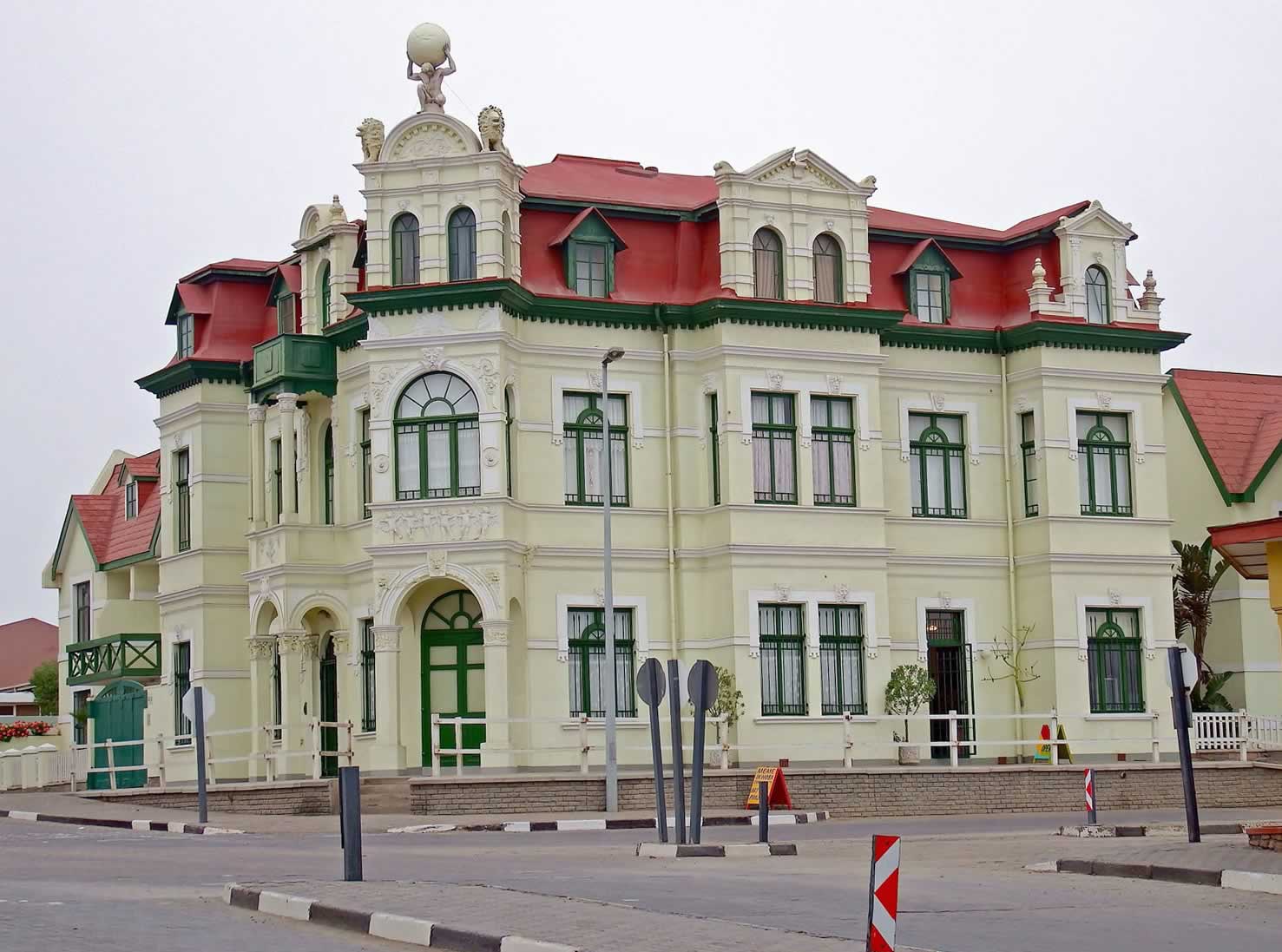Swakopmund Architecture - Swakopmund
- Swakopmund
Swakopmund Architecture

Swakopmund is full of historic examples of traditional German architecture. Most of these old buildings are not available to the public but since much of their beauty lies in their exteriors it can be enjoyed by all.
The fact that many of these buildings are still standing is due to the quality of the craftsmen and the attention to detail typical of the period.
The Altes Ampsgericht
On the corner of Theo-Ben Gurirab Avenue and Tobias Hainyeko Street is the "Altes Amtsgericht" , built in 1906 as a school but then used as the magistrates office after the state had to complete the building when the private source of funds ran out. The building was restored in 1976. Currently it houses a municipal department so during office hours you may be able to get a glimpse of the interior. The building was designed by Otto Ertl who was also responsible for designing the prison and the Lutheran church so you will notice the similarities of features, such as the gables and turrets, of these buildings.
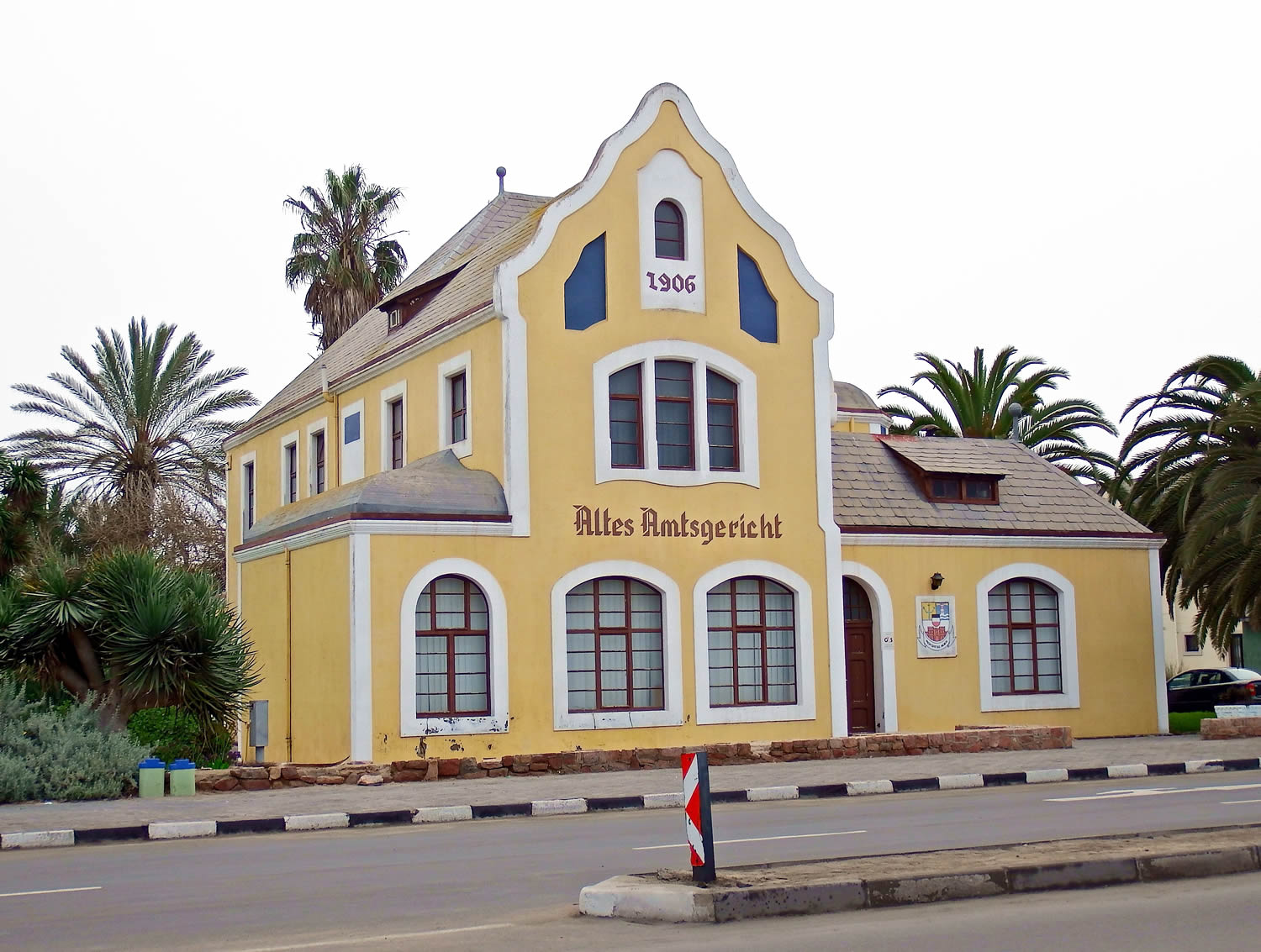
Die Kaiserliches Bezirksgericht - State House
The Kaiserliches Bezirksgericht, now known as State House, was originally built in colonial times (1901 and extended in 1905) to serve as the district magistrates’ court. After World War 1 onwards it has been used as the summer residence of the South African Administrators. In 1945 the building was again extended by adding a tower. Since independence in 1990 it serves as the official summer home of Namibia's President.
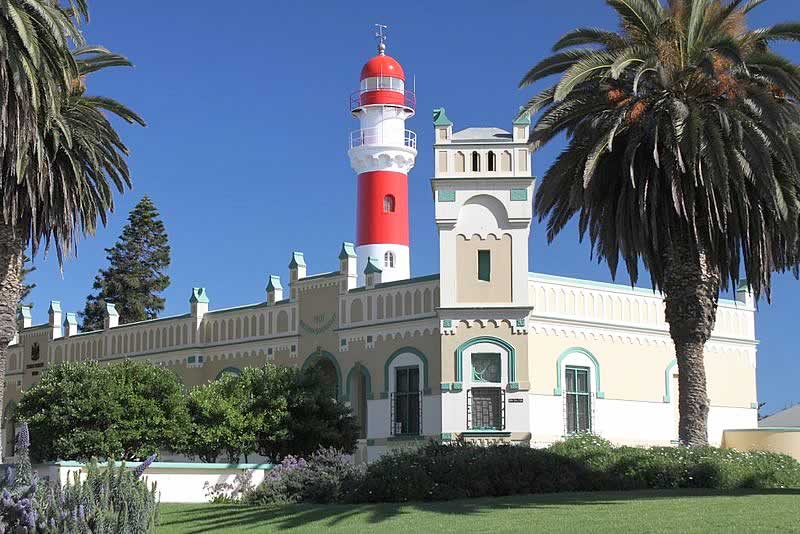
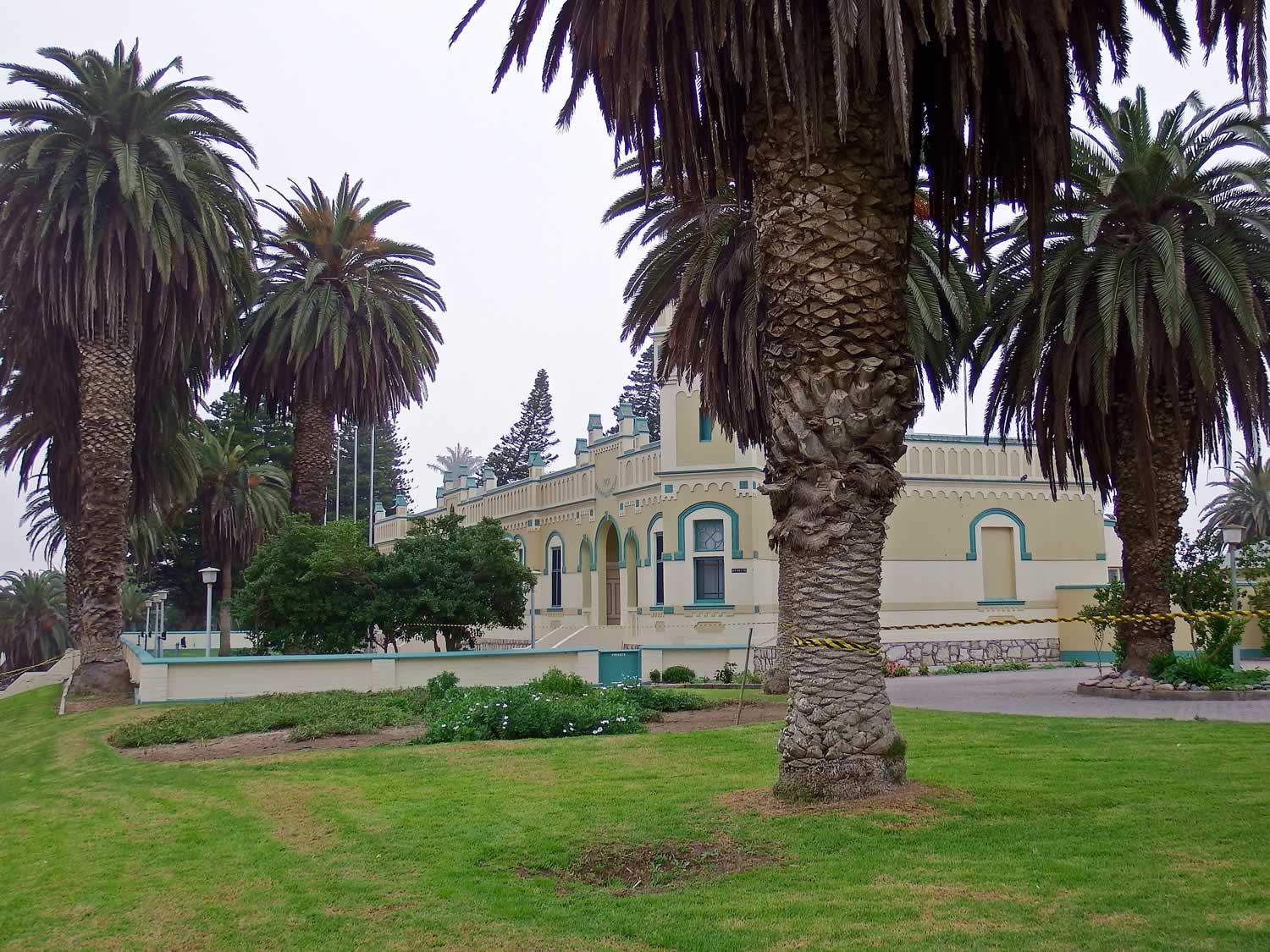
The Marine Memorial
A monument dedicated to members of the First Marine Expedition Corps who died during the Herero War, 1904-1905 is located close to the State House and is known as the Marine Memorial or Marine Denkmal. The statue was designed and cast in Berlin, and presented to the town by the crew of the German gunboat, Panther , in July 1908. The figure represents a marine standing by his wounded colleague, ready for action.
This memorial was commissioned in 1907 by the Marine Infantry in Kiel, Germany, and designed by sculptor AM Wolff.
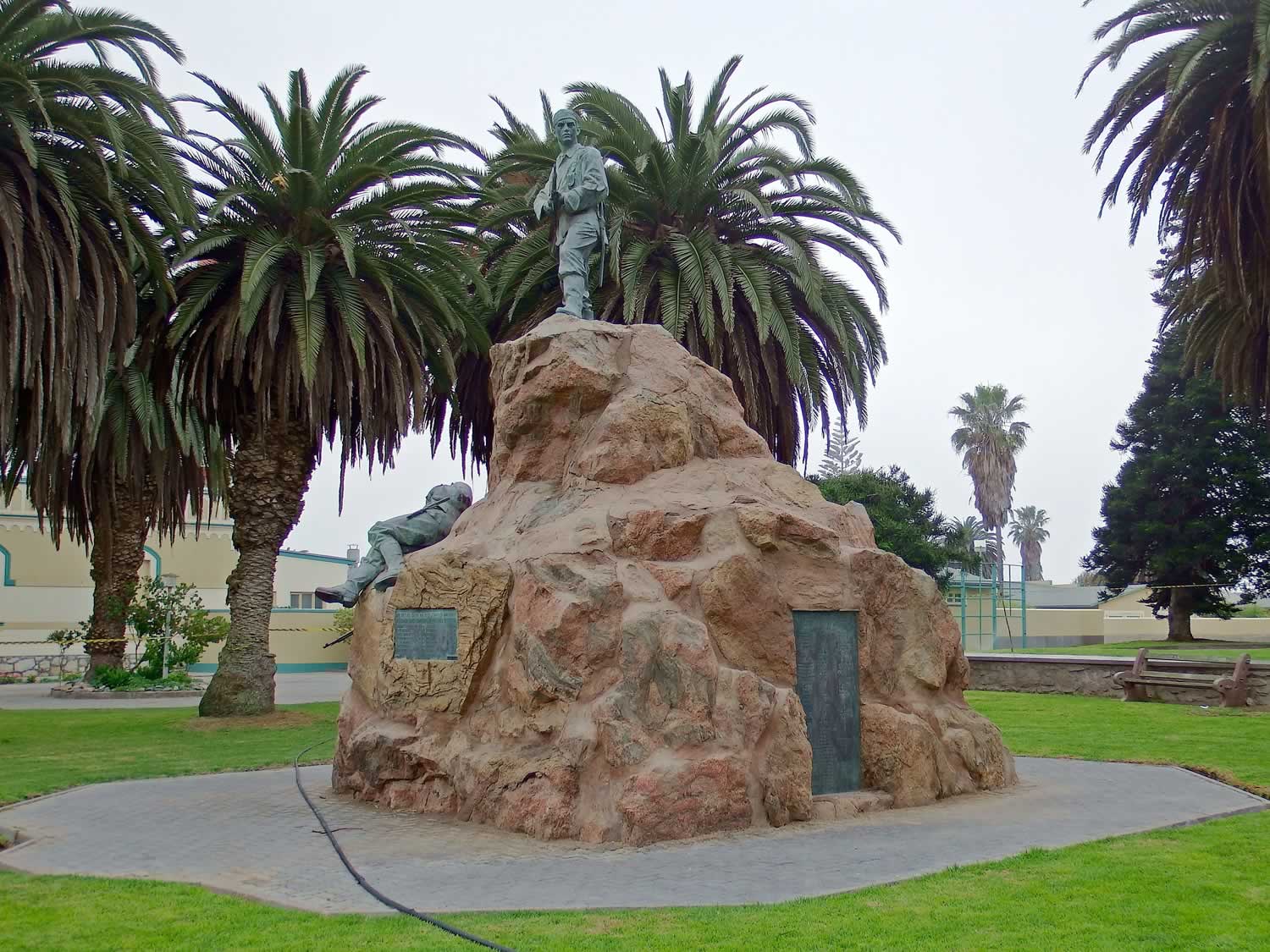
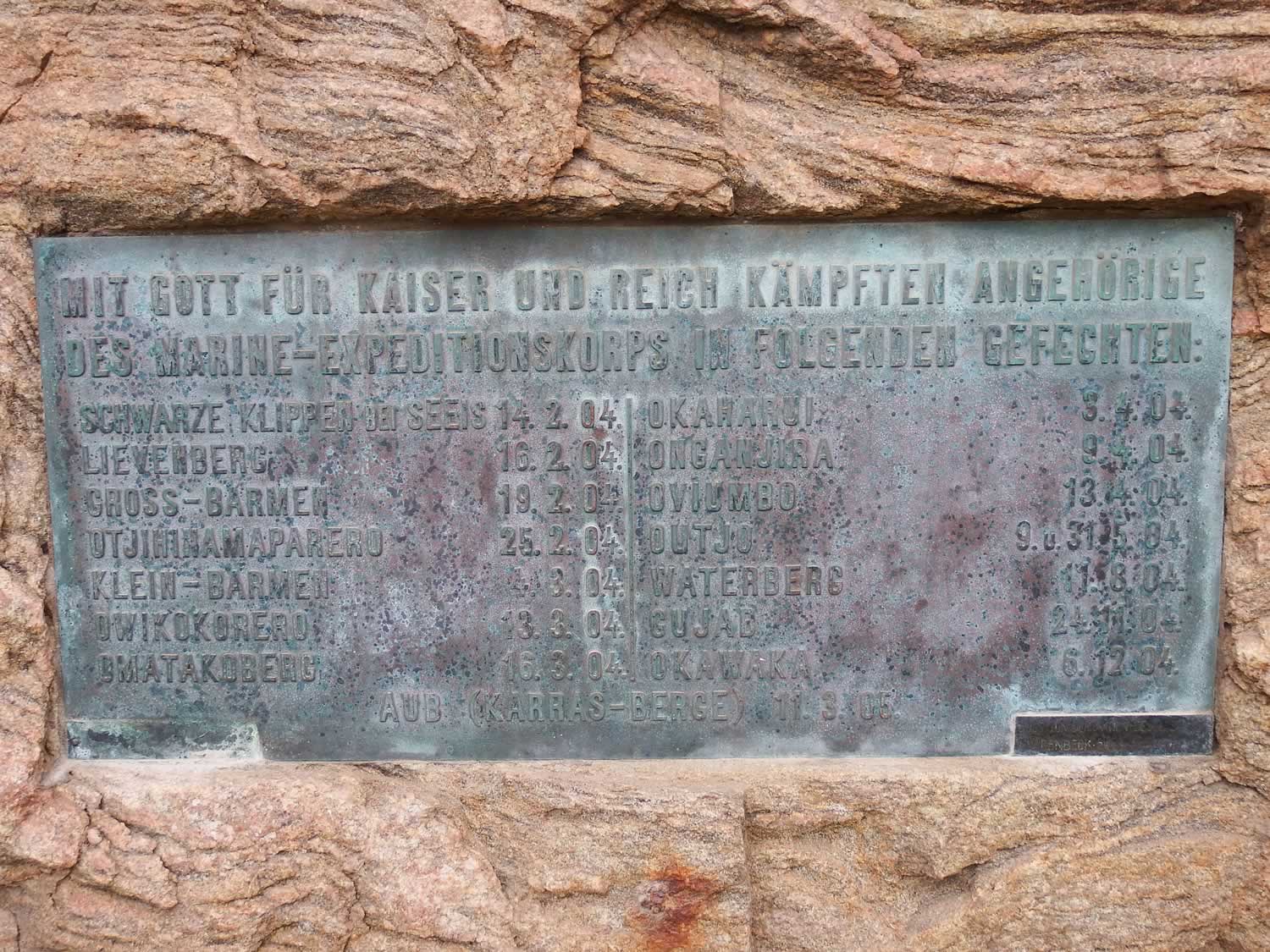
The War Memorial
Next to the State House (Kaiserliches Bezirksgericht) you will find a war memorial, commemorating the soldiers that died in the two world wars.
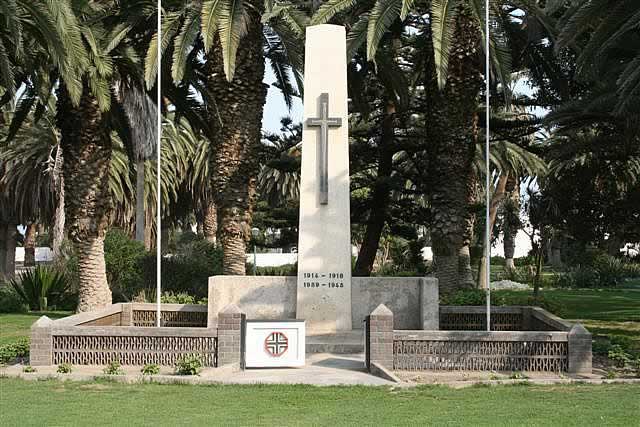
Prinzessin Rupprecht Heim
The single-storey Prinzessin Rupprecht Heim on the corner of Bismarck and Anton Lubowski Avenue was constructed in 1902, and was first used as a military hospital. In 1914 it was taken over by the Bavarian Women's Red Cross, which named it after its patron, Princess Rupprecht, wife of the Bavarian crown prince. The idea was to expose convalescents to the healthy effects of the sea breeze. Until recently, one wing was still used as a maternity ward but the building has now been converted into a guest house.
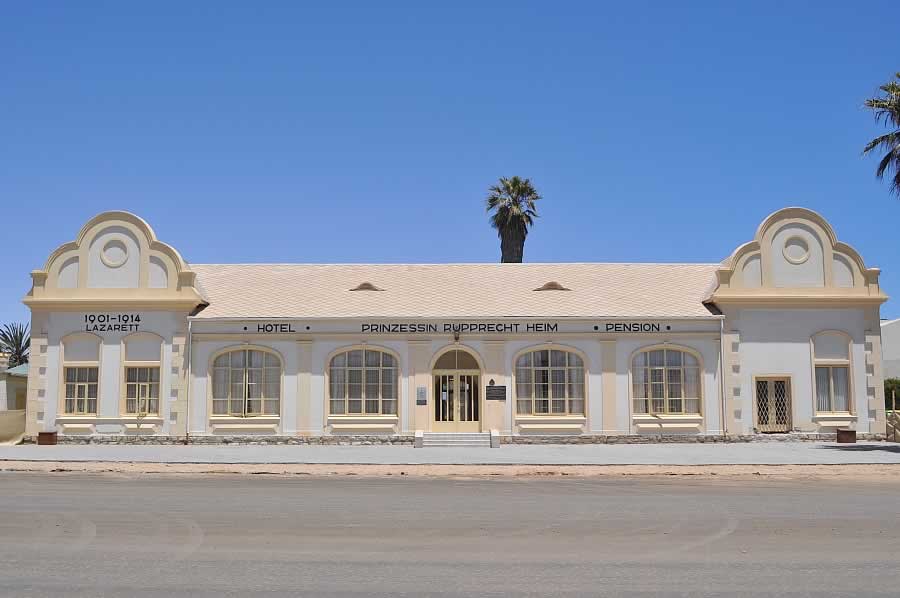
The Old Prison
The impressive 1909 Alte Gefängnis was designed by architect Heinrich Bause, The main building was used only for staff housing while the prisoners were relegated to less opulent quarters on one side. Please note that it still serves as a prison so photographs are not permitted.
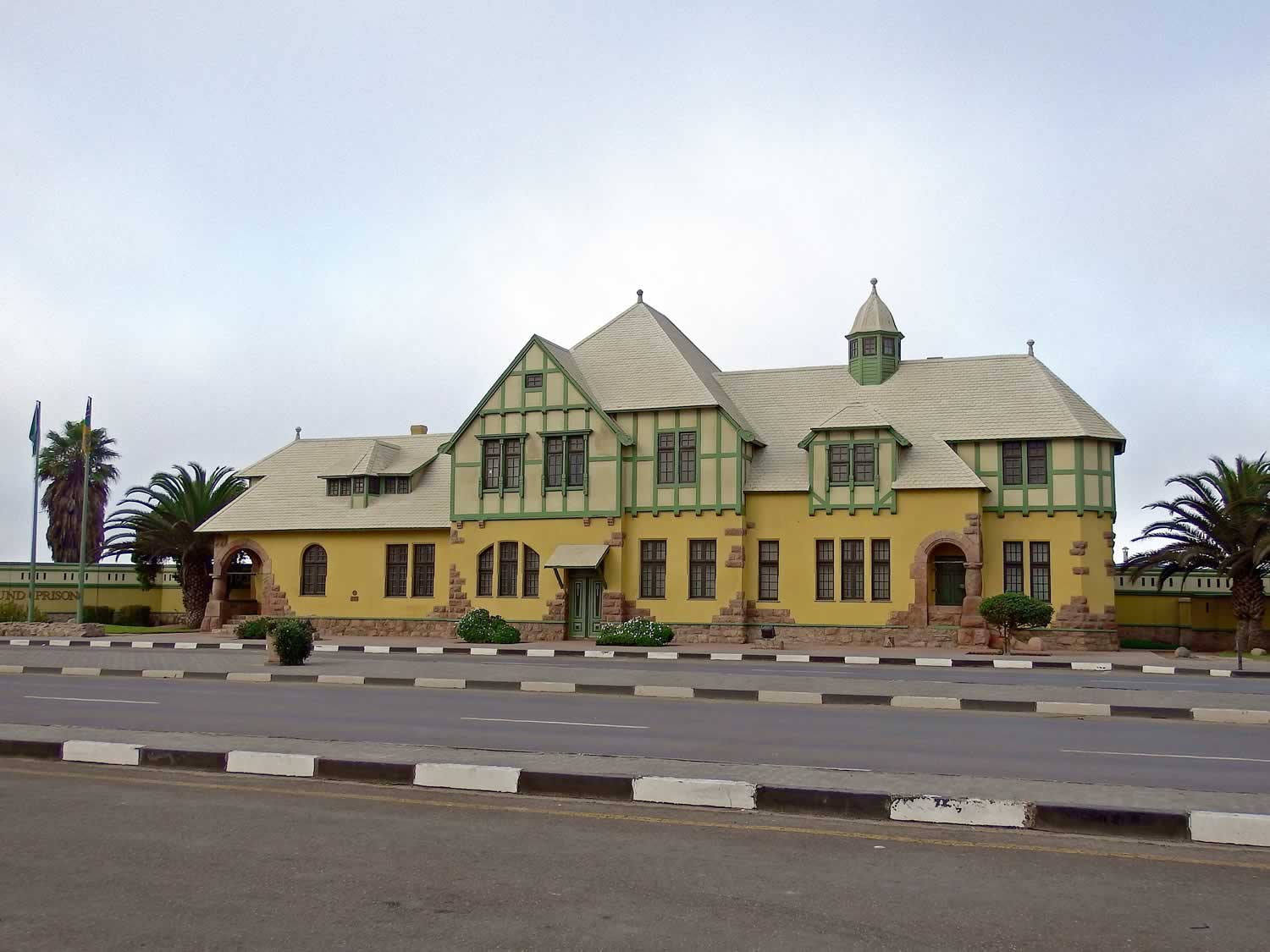
The Lighthouse
In the gardens behind the museum is the wellknown Swakopmund landmark - the lighthouse . The first version, built in 1903,
stood at only 11 m; in 1910 a further 10 m was added to reach a total height of 28 meters.
The lighthouse marked the harbour as well as warning ships off the treacherous Skeleton Coast - the light can be seen more than 33 km out to sea. In 1940 a radio beacon was added which beamed additional positioning signals to the ships out at sea. In 1956 the lighthouse's intermittent light was automated.
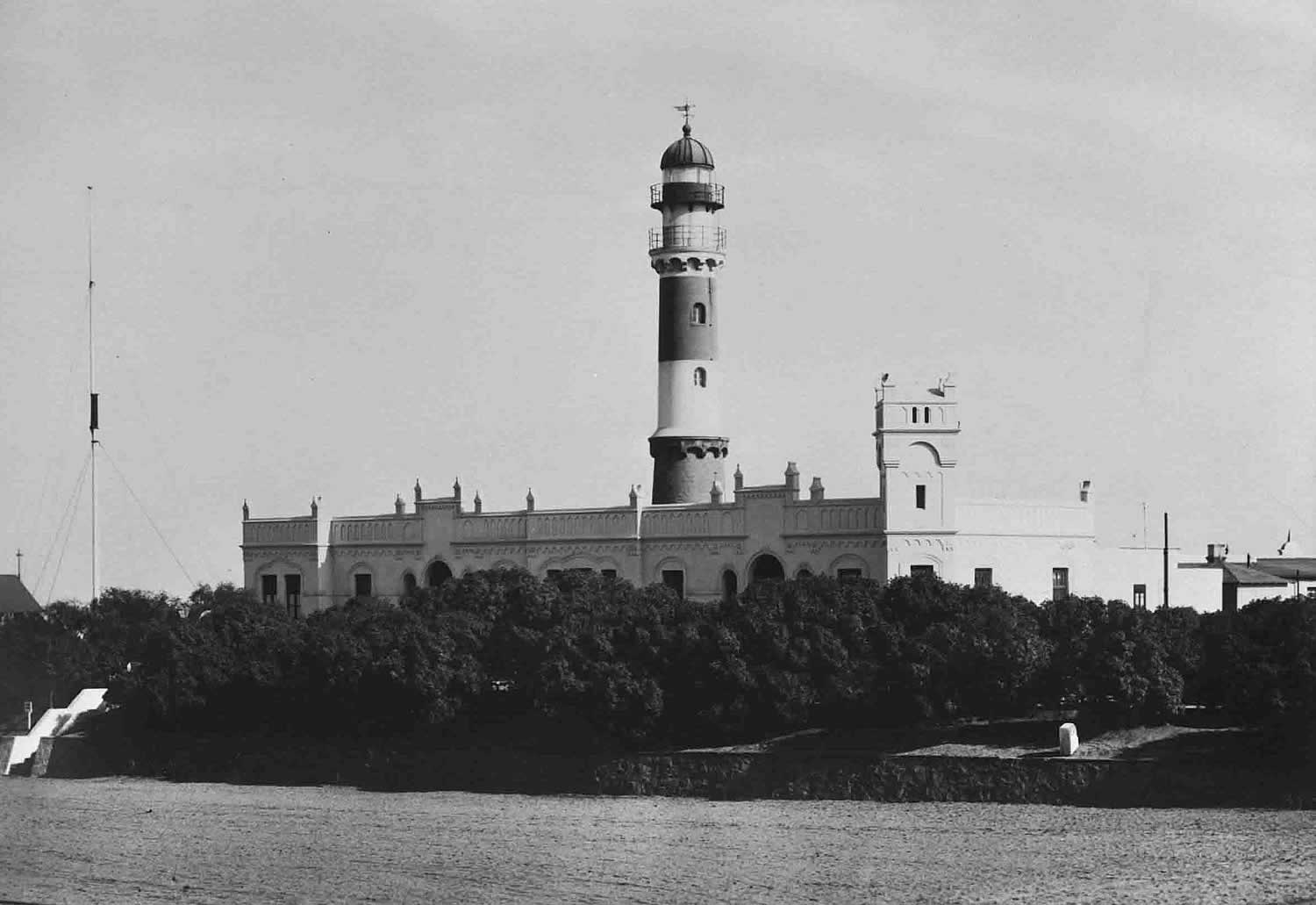
Woermannhaus
From the shore, the delightful German-style Woermannhaus stands out above surrounding buildings. It is easily recognized as the building on the high ground with a decorated tower (also known as the Damara Tower). Visitors can climb the tower and visit the Swakopmund Arts Association on the first floor, which has exhibits of traditional Namibian art alongside some contemporary European art and the local library.
Built in 1905 and designed by Friedrich Höft as the main offices of the Damara & Namaqua Trading Company. Four years later it was taken over by the Woermann & Brock Trading Company, which supplied the current name. In the 1920s, it was used as a school dormitory and later served as a merchant sailors’ hostel. It eventually fell into disrepair, but was declared a national monument and restored in 1976. The public library moved into part of the building.
Swakopmund Military Museum and the Damara Tower
For years, the prominent Damara tower (formerly a water tower) of the Woermannhaus was used as a lookout position to see when ships arrived at sea, and when ox wagons arrived from the desert and also provided a landmark for ships at sea and the traders arriving by ox wagon from the interior.
It now affords a splendid panorama, and houses the Swakopmund Military Museum and a gallery of historic paintings. You can pay the admission and pick up a key at the library.
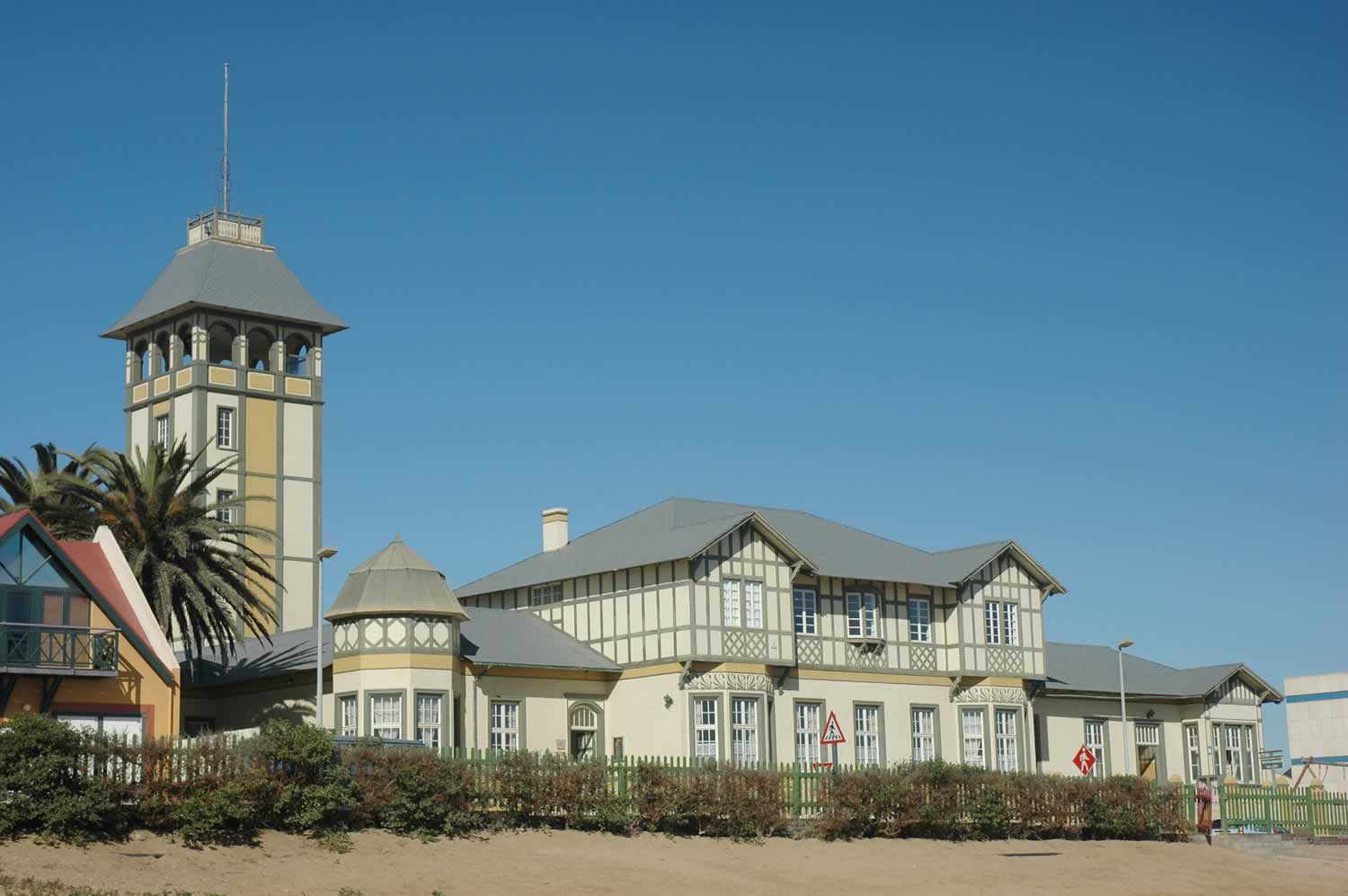
Hohenzollern Building
One of the finest colonial buildings in Swakopmund is the Hohenzollern Building , on the corner of Libertina Amathila Avenue (formerly Brücken Street) and Tobias Hainyeko Street. The most obvious feature, on the roof above the front door, is the statue of a kneeling Atlas holding up a globe of the world. In 1988 the original cement figure had to be replaced with the present plaster-of-Paris version.
The building, named after the German Imperial family of the same name, dates back to 1909 when it started life as a hotel but in 1912 it was taken over by the municipality after the hotel licence had been revoked by the local magistrate when it became a well-known gambling den.
The building was later converted into private flats.
